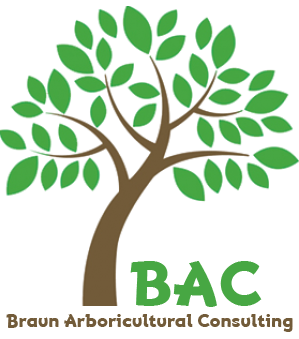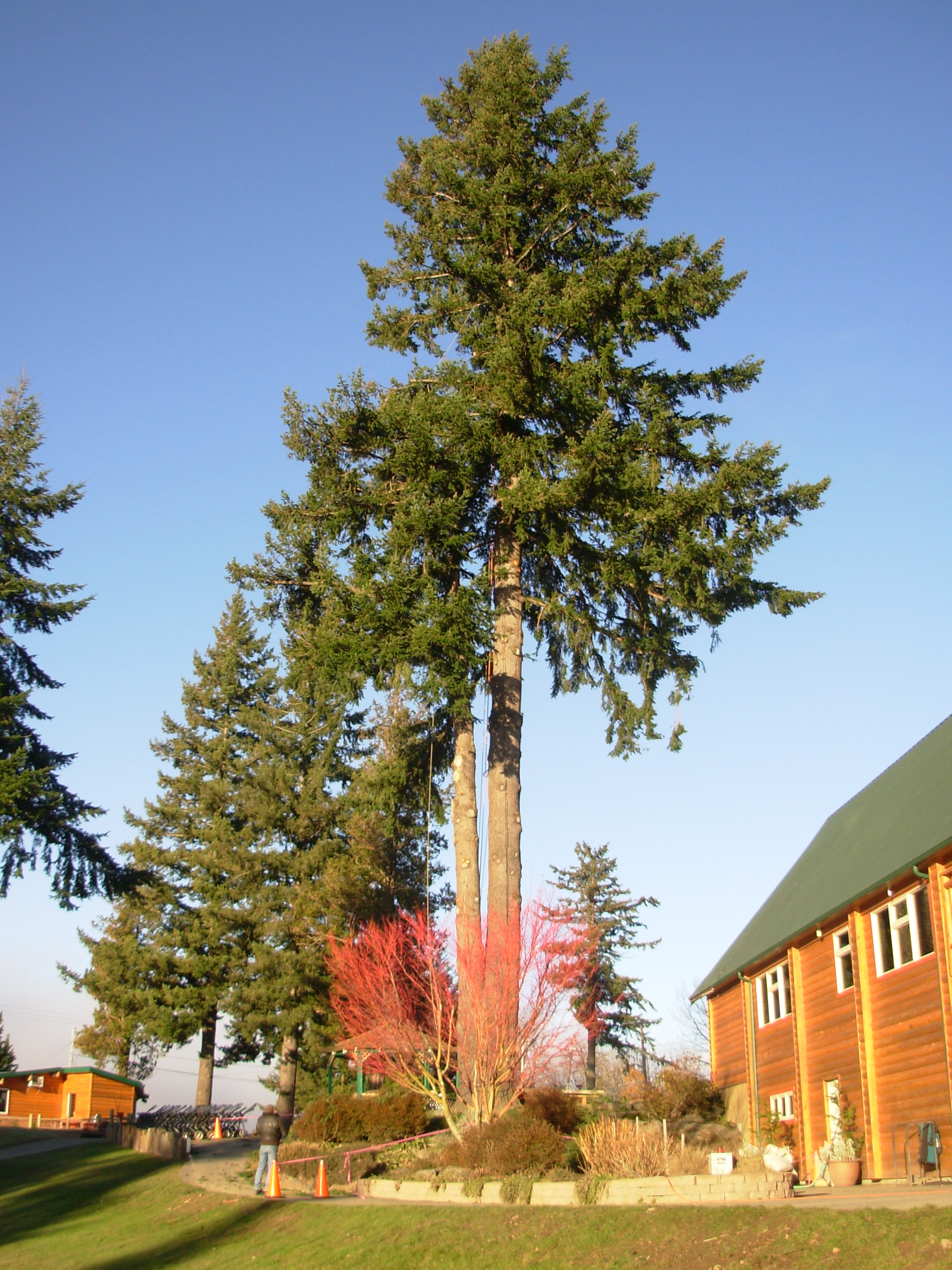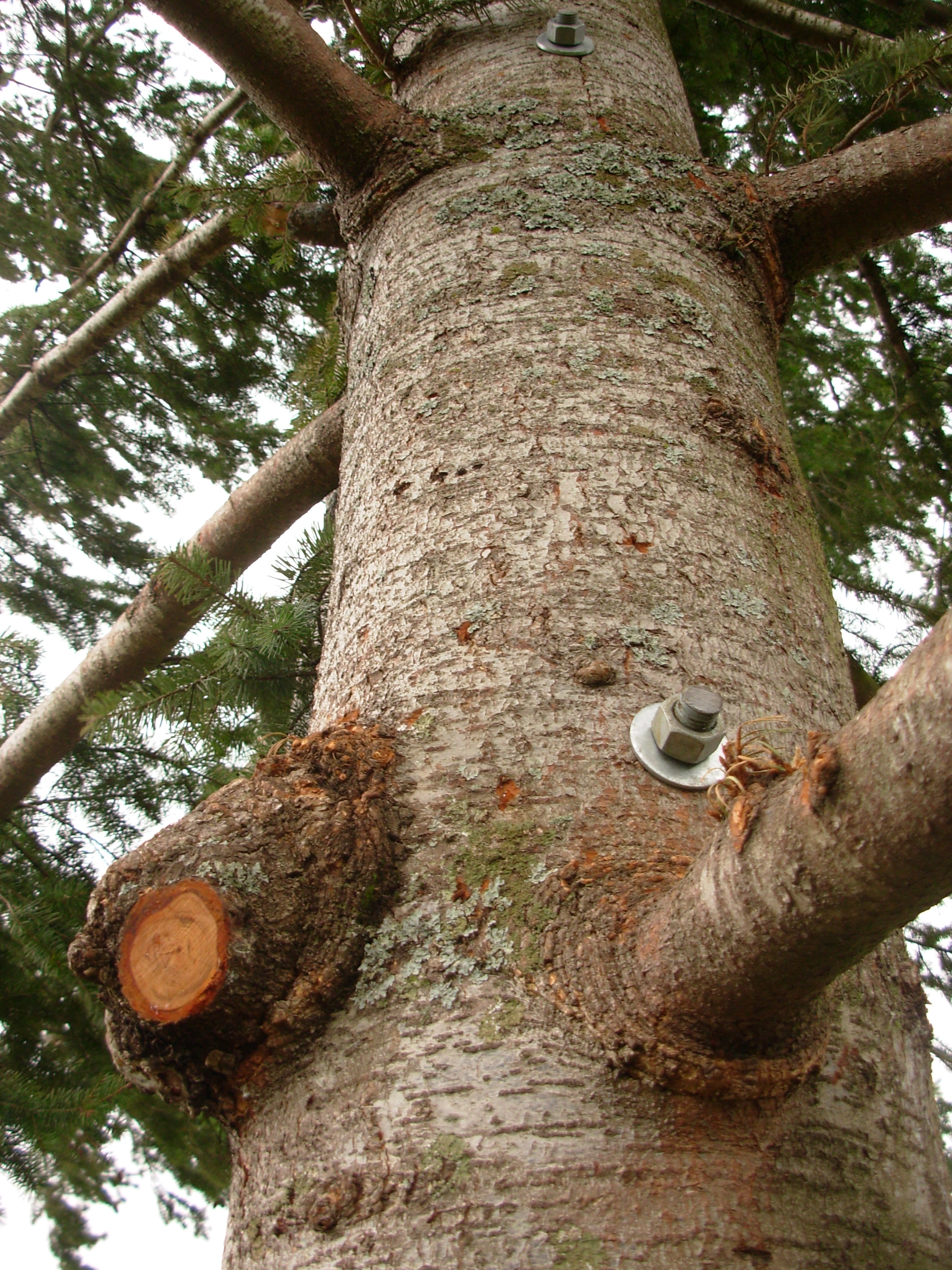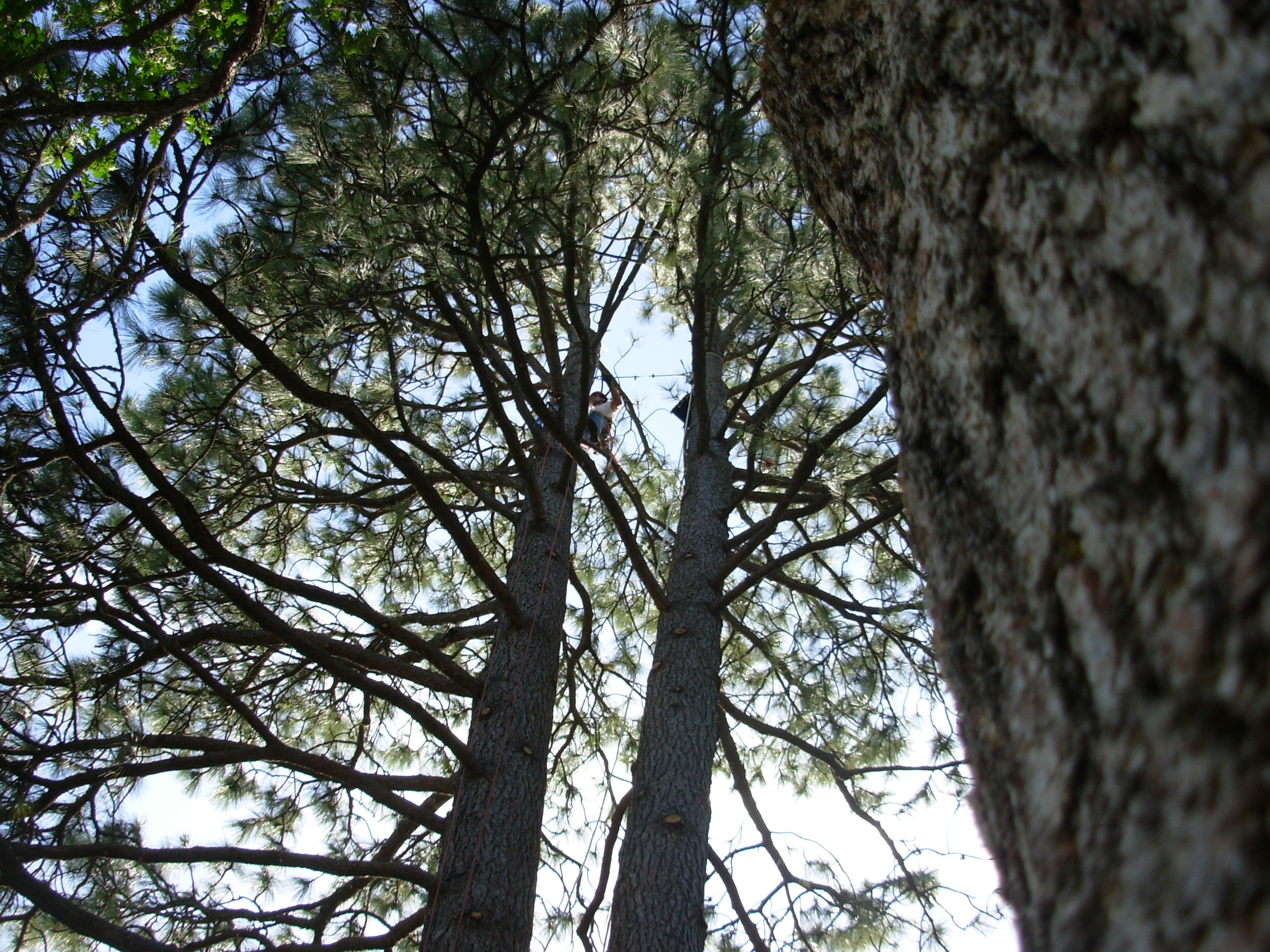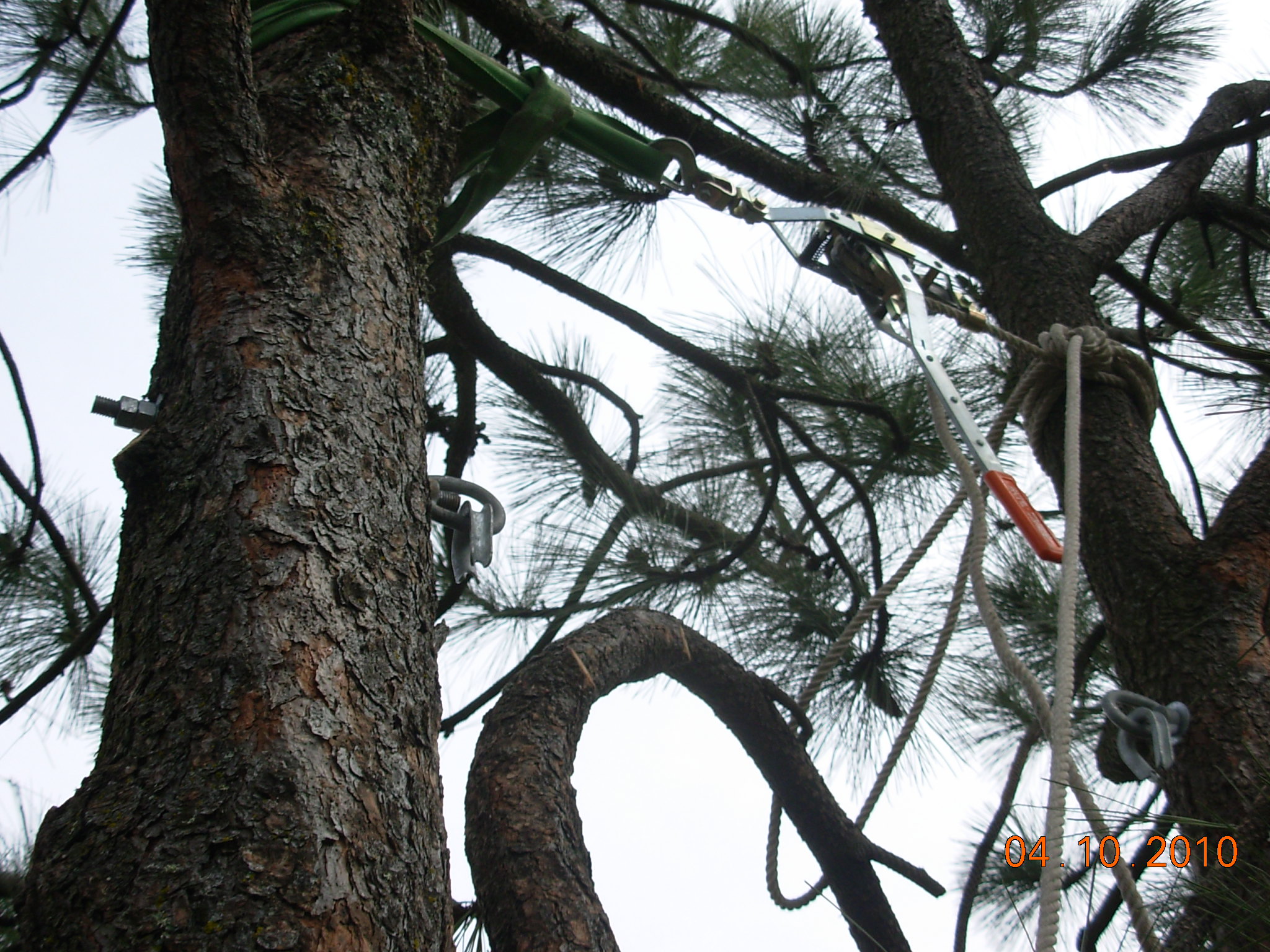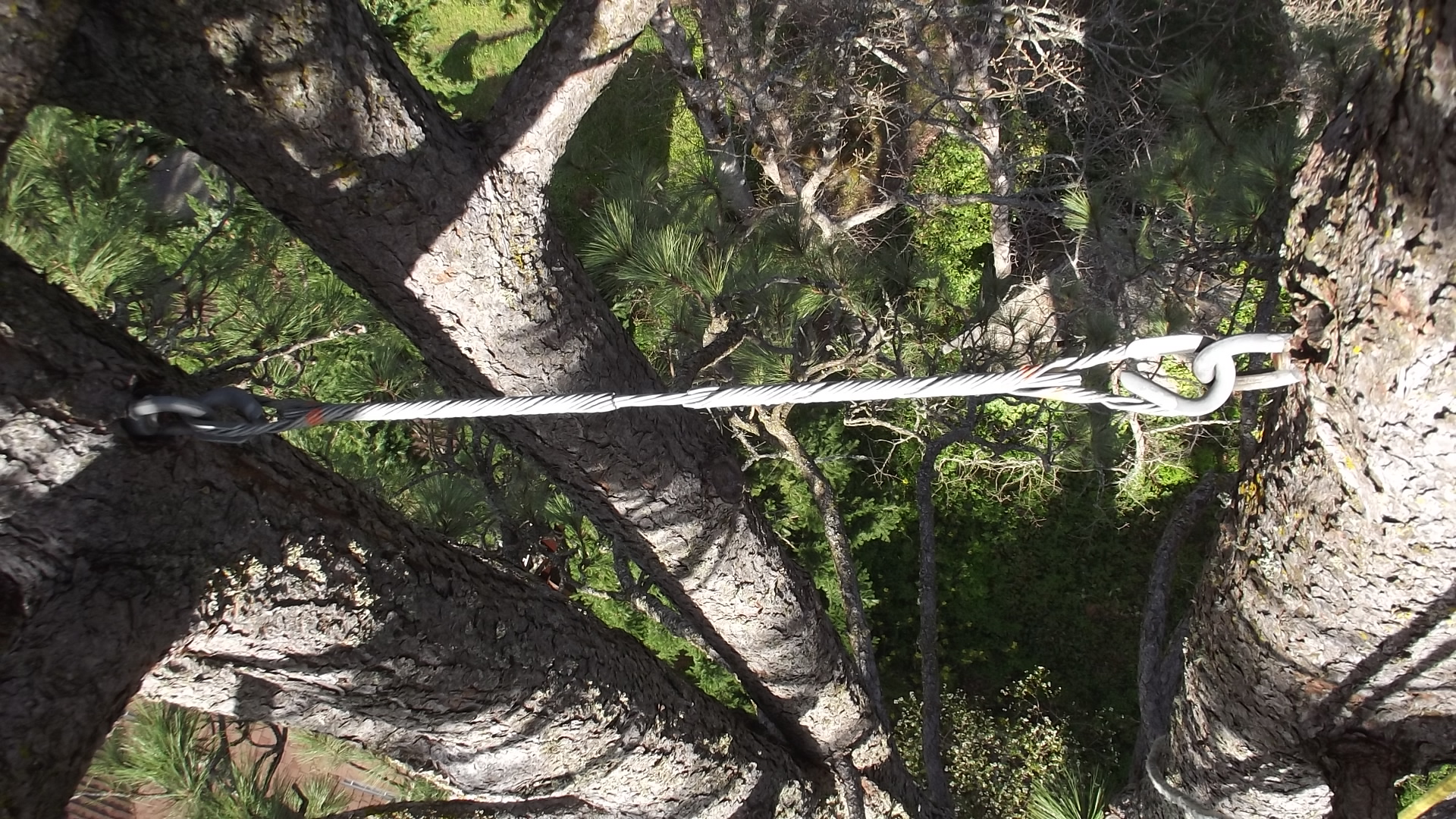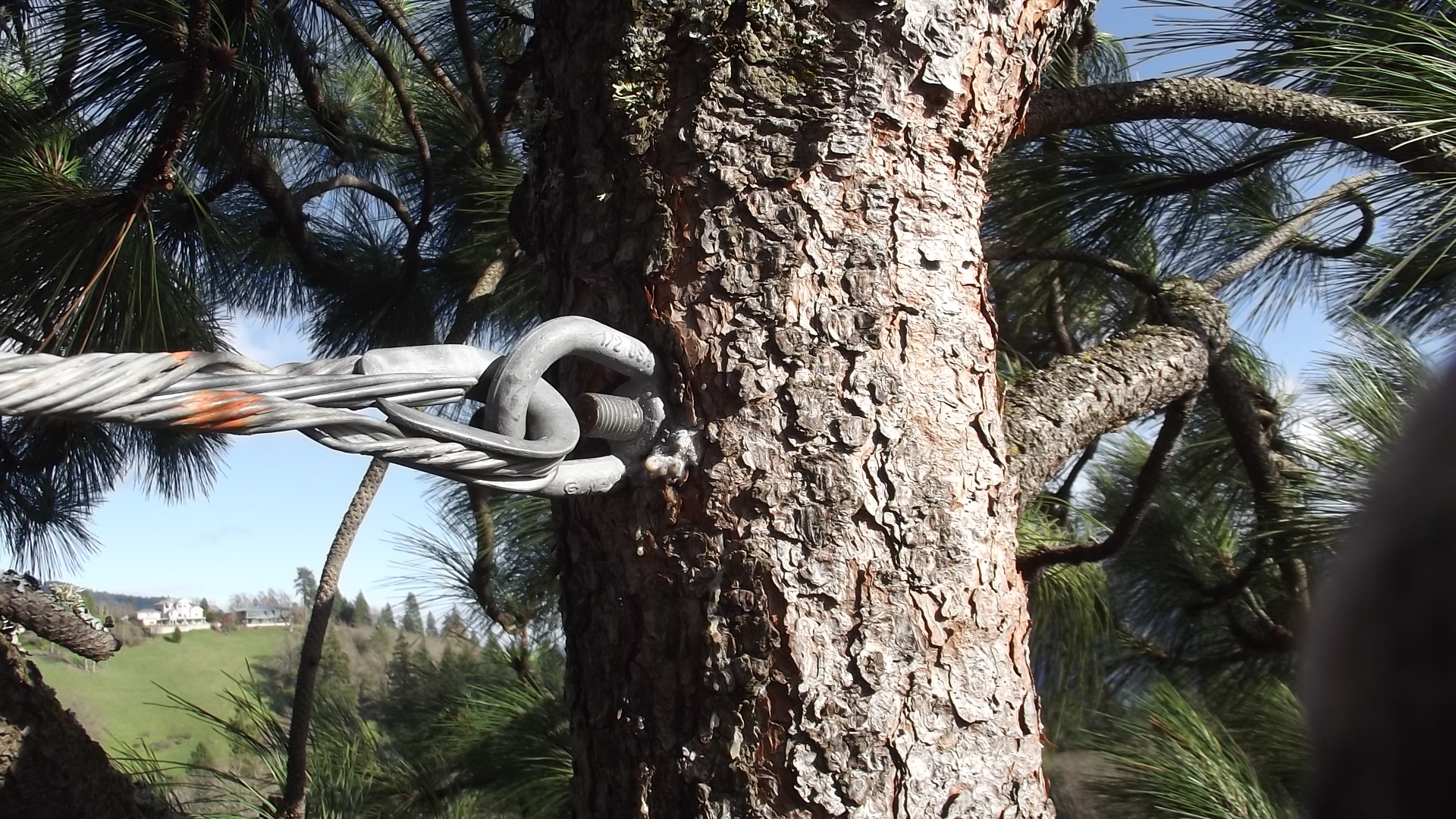Cabling & Bracing
Douglas-fir with multiple tops in Snoqualmie, Washington (first three photos). I pruned the tree, which included shortening long limbs — some had broken in the wind, and one had pierced the metal roof. Two sub-trunks bifurcating from the main trunk above an old topping cut were braced in two places to prevent opening up of old wind shake cracks. The smaller trunk attached at the base was also cabled to the main trunk.
Double ponderosa pine in Hood River, Oregon (next two photos). BAC pruned, cabled, and braced the tree, because of included bark in the main trunk fork, a likely failure point, and a home nearby representing a high-value target. The trunks were cabled about 2/3 of the way up the tree for optimal dampening of sway in the wind. The second photo shows David Braun peening over the threads on the threaded rod, to prevent the nuts from backing off of the rod.
Triple Ponderosa pine in White Salmon, Washington (next three photos). A home was directly below the tree; dead limbs were removed, and some long limbs were shortened. Two cables were installed, one above each trunk fork. The first photo shows a come-along holding two trunks in position for installation of the galvanized steel support system; the last last photo shows the tree growing around the anchor hardware two years after installation.
